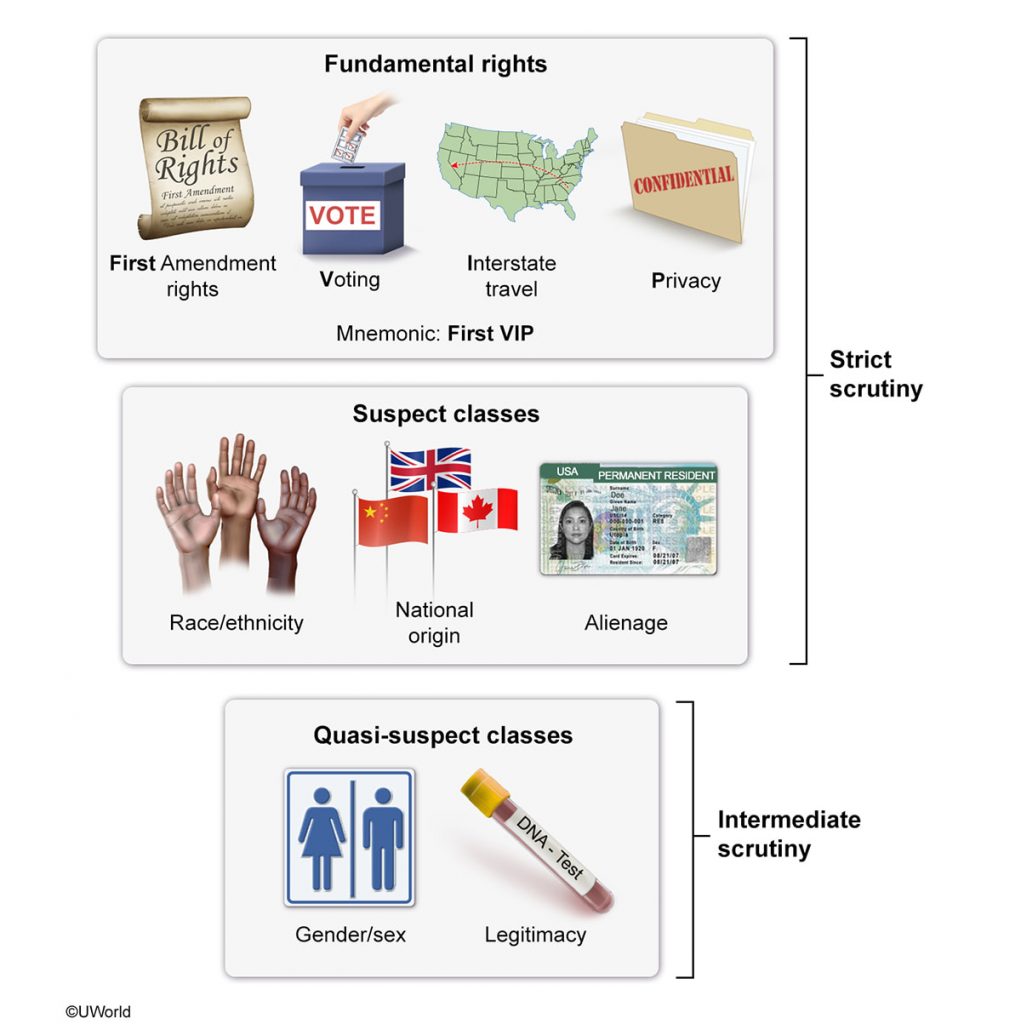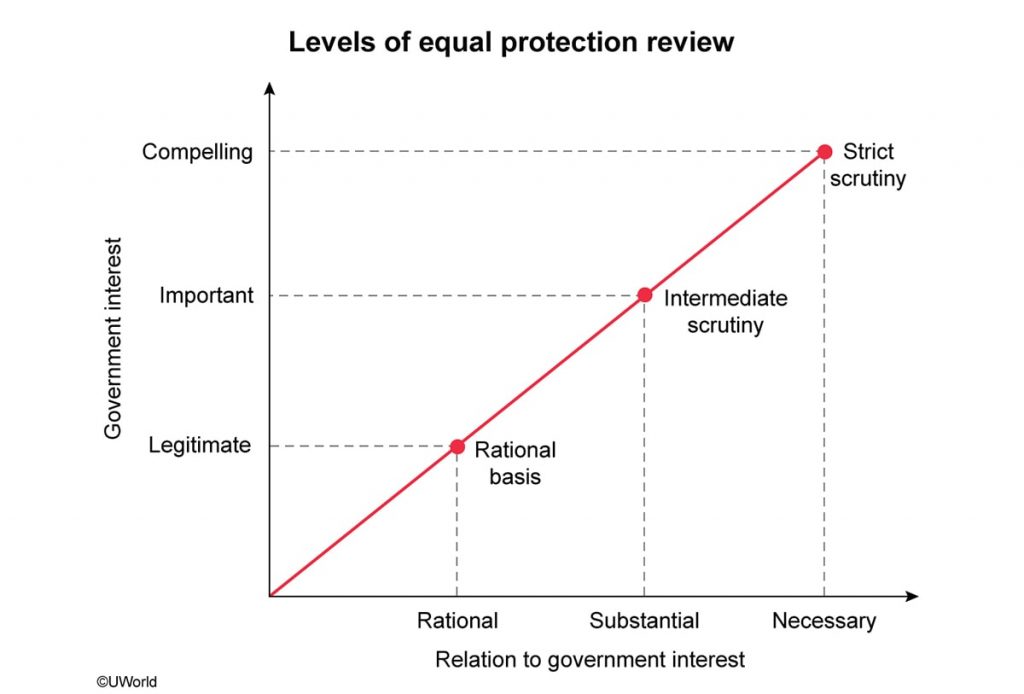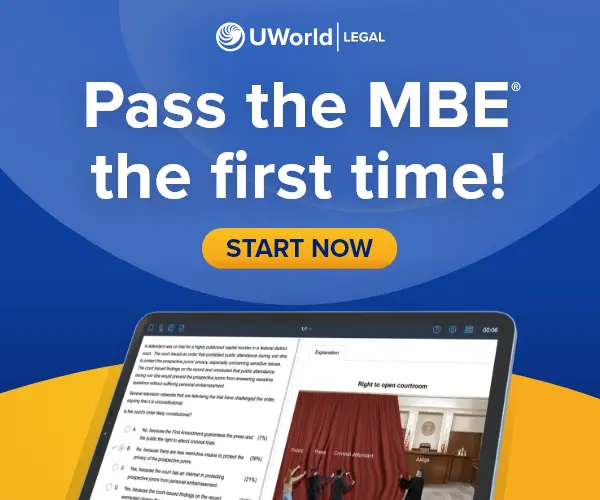Roughly half of the Constitutional Law questions on the MBE® are focused on individual rights—particularly equal protection. Students and practitioners alike struggle to spot equal protection issues and apply the appropriate standard of review. Here is an easy 4-step process to tackle nearly any equal protection question you encounter on the bar exam.
(1) Equal protection issues are easy to spot if you keep an eye out for government discrimination. Discrimination occurs when the government treats similarly situated persons differently. For example, a state law that grants licenses only to individuals who’ve lived in a state for five or more years discriminates against those who’ve lived in the state for less than five years.
(2) Next, identify the government actor. If it’s the federal government, the Fifth Amendment applies. If it’s a state or local government, the Fourteenth Amendment applies. But don’t stress! The equal protection analysis is mostly the same under either amendment.
(3) Once you’ve picked the right amendment, determine whether the government action affects a fundamental right, suspect class, or quasi-suspect class:

(4) Finally, apply the appropriate standard of review.
- strict scrutiny (fundamental right or suspect class) – the government has the burden to prove that its action is necessary to serve a compelling government interest
- intermediate scrutiny (quasi-suspect class) – the government has the burden to prove that its action is substantially related to a important government interest
- rational basis scrutiny (none of the above) – the challenger has the burden to prove that the government action has no reasonable relation to a legitimate government interest
Here’s a simple chart that will help you remember these standards of review:

Use this tip when answering practice questions in the UWorld MBE® QBank. Access our MBE QBank or purchase a subscription.




